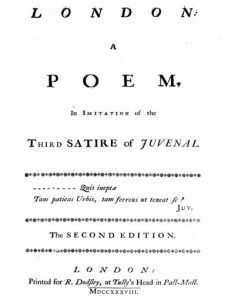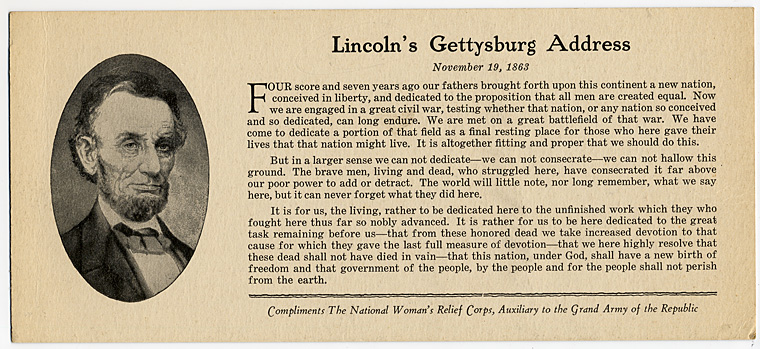
Jean-Honore Fragonard (1732-1806), The Stolen Kiss (1788)
Dear friends and readers,
A second blog on a few of the papers or talks I heard at the recent EC/ASECS conference at Gettysburg. These summaries represent the papers I was especially interested in, and was able to take down in shorthand; I also did the best I could to present the two addresses (keynote, presidential) to the society.
From the All Things French panel (Friday morning, Oct 25th), Faith Barringer’s “The Coquette, the Libertine, and Fragonard: An Intertextual Look at The Stolen Kiss connected to my own readings in 18th century French and English novels. Faith said there has been a tradition of denying that Fragonard’s painting was influenced by such novels, a preference for seeing the painting as relying on archetypes rather than specific previous paintings and texts. There is little information about this picture, and many of Fragonard’s pictures do not have specific sources, but you can (and she did) demonstrate that this particular was heavily influenced by contemporary literature; what’s more if you look at these sources, you can notice at the same time departures showing that Fragonard made made the images of coquettry and libertinism his own, and in the process made a more life-like scene, which shows affection beyond sheer erotic attraction in the couple. The novels gone over included La Vie de Marianne, Les Liaisons Dangereuses, Julie, ou La Nouvelle Heloise, La Religieuse, and the pictures included depictions of aristocratic games. She went over details in the scene showing that sentimentality and gaiety qualify what could have been a stereotypical cliched seduction scene.
The second Gettysburg faculty talk in the later afternoon was by Timothy Shannon was first in general on Pennsylvania Captivity Narratives from the Seven Years War. I’ve been interested in early modern American captivity narratives since I read Mary Rowlandson’s last winter. Prof Shannon divided these up into three eras, said there was a difference between female and male narratives, between spiritual and secularized, and briefly told of two teenagers taken captive who lived for the rest of their lives with the Seneca Indians, of a woodcutter who lived for five years with his captors, of Elizabeth Fleming. He then elaborated (from his book) on a remarkable narrative written by Peter Williamson in the context of what we know about his life. Peter Williamson was a Scotsman who claimed he was kidnapped from Aberdeen at 13 years old, sold into servitude in Pennsylvania, gained his freedom, and (among other things in a picaresque tale) lived with a planter’s daughter, was enslaved by Indians (where he was tortured), became a soldier, put in prison in Canada, and returned to Aberdeen. There seems to be an almost complete lack of documentary evidence for any of this American story; but he did marry three times in Scotland, his second wife divorced him, and he published about the divorce trial. His captivity narrative includes ersatz ethnography, and was anthologized, became part of abolitionist literature. Today in Scotland Williamson’s story is part of folklore but only turns up in more respectable enlightenment texts because Boswell was drawn to listen to “Indian Peter” one day in a coffee house.
On Saturday morning (the first session at 9 am), standing in for Anthony Lee, I chaired an excellent panel of papers on Samuel Johnson. Lance Wilcox’s on Johnson’s poem in imitation of Juvenal, London, was on how scholars and readers have read biography into Johnson’s poem, specifically since in the following year Savage left London for Wales they have aligned Thales departing London for Cambria (Wales) with Savage. It used to be that people read Johnson’s biography of Savage to learn about Savage, the then famous figure; now we read the biography because it’s by Johnson, yet this poem is still examined in terms of Savage’s life: did he fantasize in front of Johnson (or to others thus creating a rumor) at least a year before about how he was determined to leave; was Johnson prophetic, or (most likely) is the identification baseless. Still respectable people who knew or studied Johnson thoroughly have taken the hypothesis seriously: Arthur Murphy and James Clifford among them. Perhaps after the poem was written Savage consciously modeled himself on Johnson’s Thales. The point of Lance Wilcox’s witty examination of what is precisely in the poem, and how it’s been used shows the problematical nature of biographical insights. In this case where do we ascribe agency, to whom? Johnson who wrote the poem, Savage who read it? Lance suggested we need to focus on all the agents here: and ask, what did Savage get out of his friendship with this obscure young hack (Johnson), and of course what did Johnson in his biography get out of writing the life of this young man with whom Johnson had bonded so intensely.
The best modern biography of Savage is still Clarence Tracy’s The Artifical Bastard: A biography of Richard Savage. I talked with Lance afterwards and we discussed the probability that Savage’s assertion that he was the illegitimate son of Lady Macclesfield and Earl Rivers was a lie; Savage (in other words) was a complete fraud. The question is if by the end of his life he had lost all perspective and believed his own concoction. Also that Richard Holmes’s analysis and conclusion about the murder trial where Savage was declared guilty is the best most thorough one available (Richard Holmes, Dr Johnson and Mr Savage).

Sir Robert Chambers (1737-1803) by Joshua Reynolds
Thomas Curley’s paper wowed the session. In 1988 Prof Curley published two-volume edition from Clarendon Press in 1986, entitled, A Course of Lectures on the English Law Delivered at the University of Oxford, 1767-1773, by Sir Robert Chambers, Second Vinerian Professor of English Law, and Composed in Association with Samuel Johnson, and then years later Sir Robert Chambers: Law, Literature, and Empire in the Age of Johnson. What he did was (in effect) to add to Johnson’s considerable oeuvre a considerable part of the writing of Chambers’s lectures; he demonstrated that Johnson gave the young man courage and direction to write, inspired him, debated and helped him to clarify his ideas, and wrote some of the work with him, revising it too. Chambers was a 17 year old who met Johnson in 1754; they were congenial; Johnson recognized a gentle well-meaning nature. Chambers had succeeded Blackstone at Oxford and was expected to prepare lectures, and felt intense indecision, hesitation, was a self-deprecating man. So Johnson rescued him by helping him to compose, research, and providing companionship. One letter shows Johnson saying “I will try to help you.”
The collaboration was kept secret for the sake of Chambers’ career, but has alas since then been hidden from view, at least rarely paid attention to. Chambers (and Johnson’s) book is an encyclopedic survey of English law. Half the work is on the historical origins of the English gov’t. Prof Curley felt the writing on criminal and property law is mostly Chambers. One can see in the writings as they proceed a development of more opposition to Parliament, more anti-Wilkes ideas, much attention to the necessity of having order, a strong centralized power worth defending against dissident causes. These volumes are a major intellectual crossroads for studying the trajectory of Johnson’s thought; in these books (Prof Curley showed by extracts) we find parallel passages of strongly conservative thinking to some of Johnson’s polemics (The False Alarm, Taxation No Tyranny, on Ireland and America) on colonialism and taxation: the colonializing power has the right to tax the people of the colony for it provides protection; this is not tyranny. Prof Curley felt Johnson’s Thoughts on the Falkland Islands has no echoes of the early collaboration. He ended by telling us something of Chambers’ long life in India, and his young wife who outlived him by 30 years.
I have separately described & linked in my paper on “Culloden and its aftermath in Scotland (and Scottish literature) in the panel on crossroads in Jacobitism, and I will also be brief on Tita Chico’s keynote address, “Microscopes and Couplets: Scrutiny in the Long Eighteenth Century,” and Sylvia Marks’s presidential (of and for the society) “A Gettysburg Address” upon the 50th anniversary of Eastern Region — this group had been meeting for 50 years.
False Eloquence, like the Prismatic Glass,
Its gawdy Colours spreads on ev’ry place;
The Face of Nature was no more Survey,
All glares alike, without Distinction gay:
But true Expression, like th’ unchanging Sun,
Clears, and improves whate’er it shines upon,
It gilds all Objects, but it alters none.”
— Pope, quoted & analysed by Prof Chico
Professor Chico linked the inventions (Hooke’s microscope) and literature of scientific scrutiny in the era with the use of the heroic couplet, as two linked ways of analyzing the natural and human worlds; methodologically linked as a way of delving what we see, giving observation a framework by which we can bring together disparate experience. Newton’s prism enables us to see what we would not otherwise, and 18th century modes of poetry are constructs that bring together what is central and marginal, strong and vulnerable in our societies. We must dis-identify, unsettle ourselves to recognize full truths about ourselves.
Sylvia’s talk was a pleasure to listen to: she used Lincoln’s address, its occasion and what Lincoln was reading as well as the hard history to come after the killing in Gettysburg (and elsewhere) was over to move to American history during the 50 years of the existence of ASECS and this regional group. She then retold briefly the history of our group, how it was founded, where it first met, the development of the Leland and Molin awards, and then the cultural upheavals that have been going on in our profession as reflected in some bleak pictures described in previous addresses. She then turned for a parallel trajectory to the long friendship of Francis Burney and Samuel Johnson as recorded in Burney’s journals, what Johnson said to Burney on the day they first met, how she described him, what their relationship was like over the years, his troubles and hers, taking us to their last meeting when he was very ill, what she said and how he looked.
(Austen would have enjoyed hearing the 50th anniversary address as much of it was on Johnson and Burney, using her diary and journals, which, because published only after Burney’s death, Austen would never have gotten to read.)
I never did mention how on our first night, our oral/aural experience — an hour’s worth of poetry reading and sometimes putting on 18th century plays or parts of play, we acted out (as best we could, with no practice and just scripts before us) the famous China scene from Wycherley’s Country Wife. I read Lady Fidget’s part.
Ellen



